Dinosaurs first appeared on earth nearly 250 million years ago and survived until a mass extinction event around 65 million years ago. This means that they were dominant animals on the planet for over 150 million years – far longer than human beings. Most scientists believe that the mass extinction of the dinosaurs was caused by a meteor landing on earth.
What we know about the dinosaur kingdom has been mostly gained by looking at fossil records and building up a picture of what these sometimes ferocious but often gentle creatures looked like. Fossils are the skeletons of creatures preserved for posterity by volcanic activity, which accurately captured their images in rock formations as they died.
One of the richest fossil areas in Britain is around Lyme Regis on the South coast of the county of Dorset, where Mary Anning lived. She was a relatively uneducated woman who had the knack of spotting fossil remains in the area where she lived. Her life was imagined in the film Ammonite in which she was portrayed by the Oscar-winning actress Kate Winslet.
Towards the end of Ammonite, Mary Anning is shown travelling to London – an event of which there is no record and which probably never happened. This, however, was in the early nineteenth century when interest in fossils was growing, and usually, male collectors were beginning to exhibit their findings. As a woman, Mary was sidelined during her own lifetime but she has been recognised recently, and a statue was unveiled to her in Lyme Regis.
Three places to find dinosaurs in London include the Natural History Museum, Crystal Palace Dinosaurs and Jurassic World: The Exhbition.
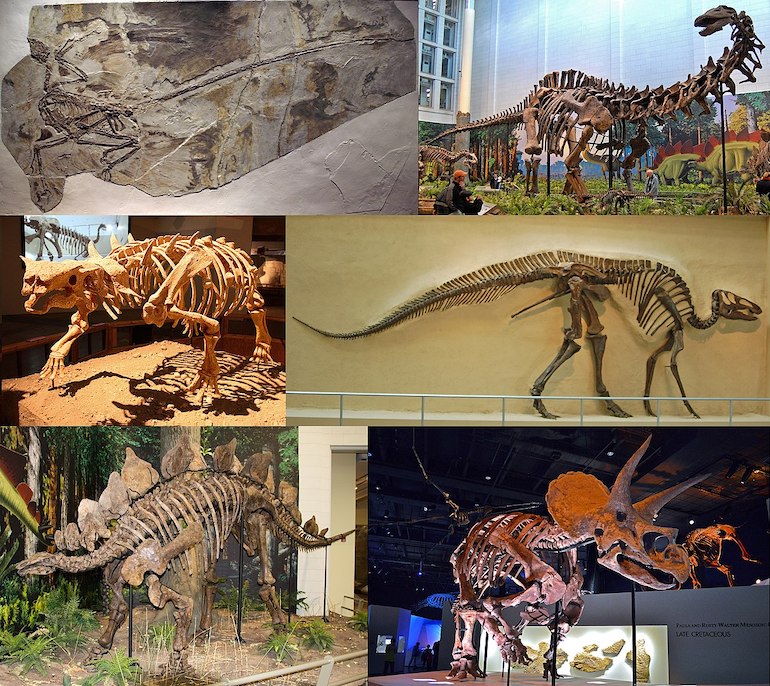 Montage of six dinosaur fossils. Photo Credit: © DrKay via Wikimedia Commons.
Montage of six dinosaur fossils. Photo Credit: © DrKay via Wikimedia Commons.
Dippy the Dinosaur at the Natural History Museum
Many of the fossils collected and exhibited at this time can be seen in the Natural History Museum in the South Kensington area of London. Originally formed as part of the British Museum, the Natural History Museum became a separate and independent establishment in 1963. However, it had long been housed in a distinctive building on Cromwell Road, which was designed by Alfred Waterhouse and opened in 1881. It is well known to London blue badge guides who often meet their groups arriving from out of town outside it.
Until 2017 visitors arriving at the Natural History Museum would see a model of a huge diplodocus dinosaur in the entrance lobby. Nicknamed ‘Dippy,’ it is a model of a dinosaur discovered at Medicine Bow in Wyoming (USA) on independence day (4th July) in 1899. The original skeleton is in Pittsburgh, and the model was made and donated to the London museum by the philanthropist Andrew Carnegie after a suggestion by King Edward VII.
From 2017 to 2022 ‘Dippy’ was removed from his home in South Kensington and went on a tour of other museums throughout Britain. He was returned amid great fanfare in June 2022 and can be seen in a special display room rather than in the lobby of the museum. The model consists of 292 pieces, is 21.3 metres (70 feet) long and was unveiled in 1905. The skeleton of a blue whale has replaced Dippy in the museum’s entrance hall.
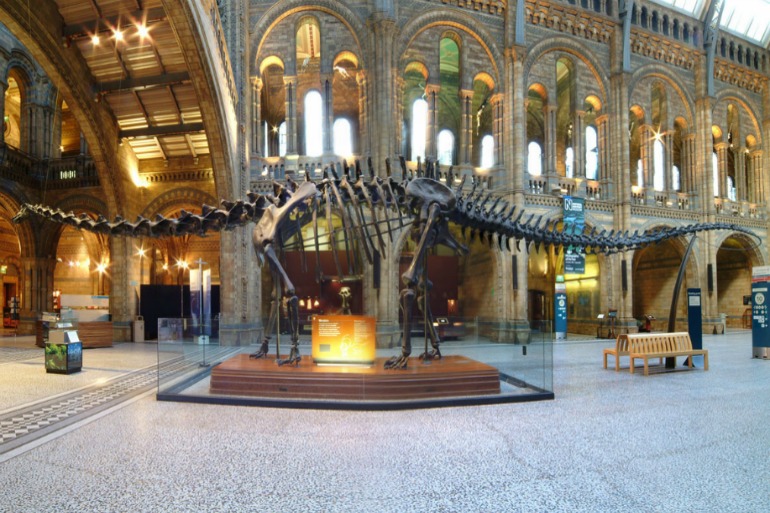 Dippy the Diplodocus at the Natural History Museum in London. Photo Credit: © Natural History Museum.
Dippy the Diplodocus at the Natural History Museum in London. Photo Credit: © Natural History Museum.
Given the huge interest in dinosaurs, especially from its many younger visitors, the Natural History Museum has dedicated a whole section on its ground floor to them. Found inside the Blue Zone of the museum, it features animatronic models of dinosaurs that move and make sounds, sometimes convincing visitors that these creatures have come back to life!
One of the models is of a Tyrannosaurus Rex, a vicious flesh-eating carnivore with two large hind legs and two short forearms, which were very strong for their size and, scientists now believe, may have been used by males during mating to mount the females. These animals are also believed to have had what we would now classify as very bad breath!
Other models inside the museum show dinosaurs with feathers. After their mass extinction sixty-five million years ago, dinosaurs are believed to have survived as and evolved into birds. At the same time, mammals, particularly humans, rose to become the dominant species on earth.
Crystal Palace Dinosaurs
Human beings have long been fascinated by dinosaurs, as the success of the Jurassic Park series of films has demonstrated. In Victorian times, a good deal of guesswork was involved in recreating models of these creatures, many of which are on display at a park in the Crystal Palace area of South London. The Crystal Palace no longer exists, but the dinosaurs remain.
The sculptures were commissioned in 1852 and unveiled in 1854. At this time, the Crystal Palace was moved from its location in Hyde Park near the current site of the Natural History Museum after the Great Exhibition of 1851 had ended. The Exhibition was held inside the Palace, which was designed by Joseph Paxton and was exactly 1851 feet long. The Great Exhibition attracted over six million visitors who travelled from all over Britain and the world to see the glories of the British Empire.
After the closure of the Great Exhibition, the Crystal Palace was moved to the Penge area of London, which is often known by the name Crystal Palace, a name that has since been adopted by the local soccer team, who is nicknamed ‘The Glaziers.’ The Crystal Palace itself, the interior of which was made largely of wood, was destroyed in a fire in 1936.
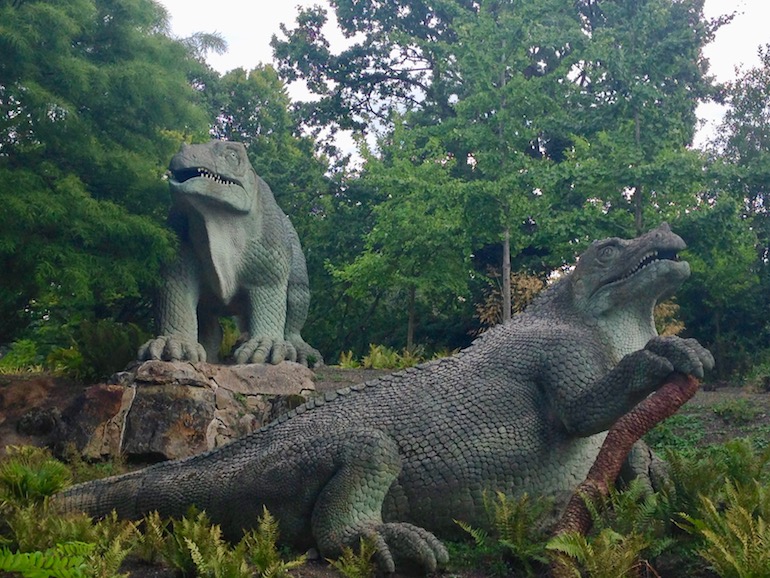 An 1853 model of an Iguanodon, the most recognisable of the Crystal Palace Dinosaurs in London. Photo Credit: © Ursula Petula Barzey.
An 1853 model of an Iguanodon, the most recognisable of the Crystal Palace Dinosaurs in London. Photo Credit: © Ursula Petula Barzey.
The dinosaur sculptures were made by Benjamin Waterhouse Hawkins under the supervision of Sir Richard Owen, a paleontologist who coined the term dinosaur (which means ‘terrible lizard’). Although not considered very accurate today, the Crystal Palace sculptures represent the extent of knowledge available in the mid-nineteenth century.
The sculptures are arranged on three islands representing the Palaeozoic, Mesozoic, and Cenozoic eras. The sculptor Hawkins hosted a New Year’s Eve dinner inside the body of an Iguanodon on 31st December 1853. The sculptures soon became very popular with the British public, possibly making a significant contribution to our current interest in dinosaurs.
Although they were long derided for being inaccurate and have been damaged and eroded since they were first erected in the middle of the nineteenth century, the Crystal Palace dinosaur sculptures are now considered a part of London’s heritage and were extensively restored in 2002. They were protected by being granted Grade One listed status in 2007.
Jurassic World: The Exhibition
Such is the interest in dinosaurs in London that on Friday, 25th August, a 20,000 square-foot immersive experience, Jurassic World: The Exhibition, will open. Inspired by the blockbuster Jurassic World movies, visitors of all ages will have the ability to see life-sized dinosaurs and explore prehistoric environments. They will be able to come face-to-face with a Velociraptor and gaze in wonder at a towering Brachiosaurus. Attendees will also get a rare up-close look at the most vicious dinosaur of them all, the Tyrannosaurus Rex. The one-hour immersive Jurassic World: The Exhibition will be located at Excel London, Royal Victoria Dock, E16 1XL. Find out more and book tickets via their website.
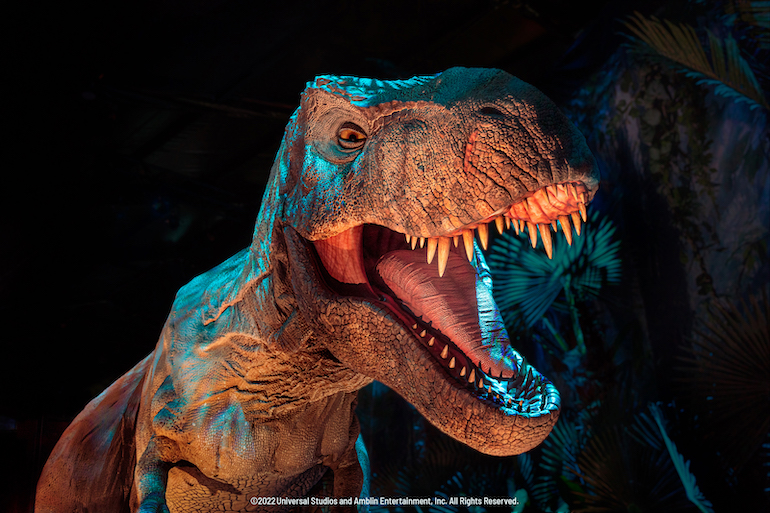 Dinosaur as part of Jurassic World The Exhibition. Photo Credit: © Universal Studios & Amblin Entertainment.
Dinosaur as part of Jurassic World The Exhibition. Photo Credit: © Universal Studios & Amblin Entertainment.
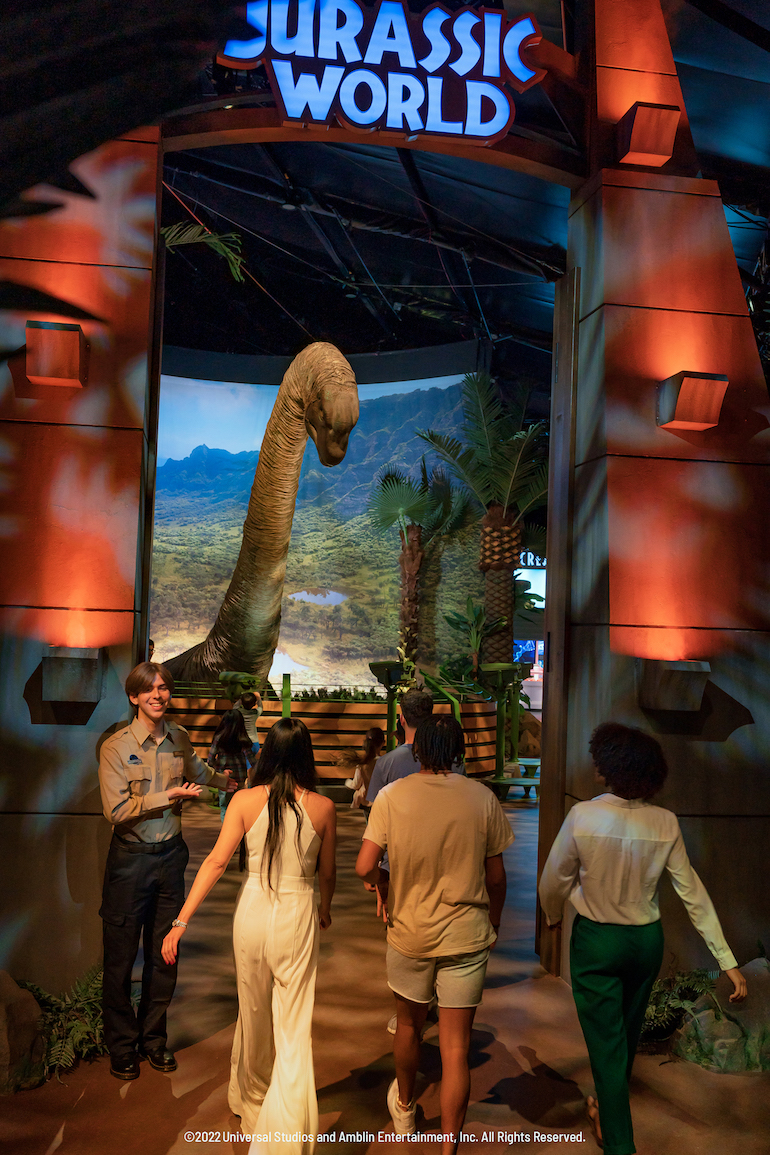 Jurassic World The Exhibition launches in London. Photo Credit: © Universal Studios & Amblin Entertainment.
Jurassic World The Exhibition launches in London. Photo Credit: © Universal Studios & Amblin Entertainment.



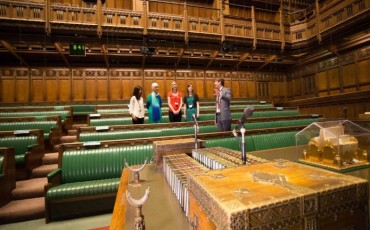
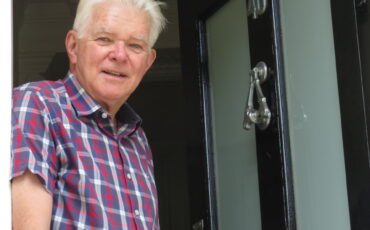


Leave a Reply